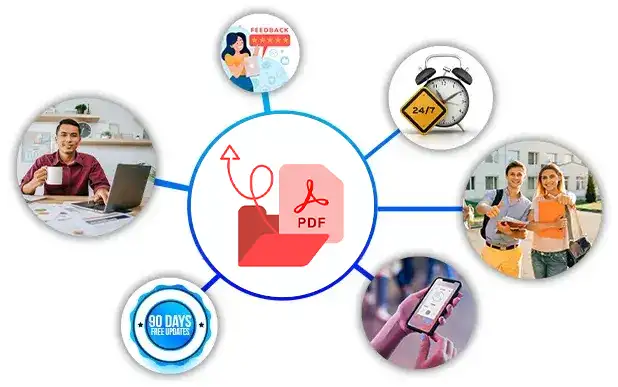- Home /
- CheckPoint /
- Check Point Certified Maestro Expert /
- 156-836 CCME PDF
CheckPoint 156-836 PDF Exam Questions:
How to Get Success in CheckPoint 156-836 Exam:
- Avoid deceptive 156-836 PDF Exam Questions.
- Focus on 156-836 Questions (PDF) based on the latest exam syllabus.
- Make notes of CheckPoint 156-836 PDF for better learning.
- Prepare from our latest CheckPoint 156-836 PDF file and get success in first attempt.


Prepare CheckPoint 156-836 Exam Within Short Time
Your knowledge and abilities are validated by passing the CheckPoint 156-836 exam. Our PDF questions and answers will help you prepare for the 156-836 exam in a short time because it includes questions similar to the real CheckPoint exam questions. After downloading the 156-836 CheckPoint PDF exam questions, relevant to the actual exam, you can take a print of all questions and prepare them anytime, anywhere.
Realistic Scenario Based CheckPoint 156-836 PDF Exam Questions:
Everyone wants to become certified Check Point Certified Maestro Expert and improve his/her resume. You should practice with real 156-836 questions. Students can benefit from the 156-836 exam questions which are available in PDF format. The 156-836 exam questions and answers are designed to match the criteria of the actual exam. If you use scenario-based CheckPoint 156-836 questions you will have an extra potential to clear the exam on the first attempt.
What Maestro component is automatically designated the SMO Master?
See the explanation below.
The SMO Master is the SGM that is responsible for synchronizing the configuration and policy with the other SGMs in the security group. The SMO Master is automatically designated as the SGM with the lowest member ID, which is usually the first one added to the security group. The SMO Master can be changed manually if needed.
* Maestro Frequently Asked Questions (FAQ), under ''What is a Single Management Object (SMO)?''
* Check Point Jump Start Course: Maestro, under ''Maestro Security Groups''
What is a downlink interface used for?
What type of license is required for an MHO?
See the explanation below.
The MHO (Maestro Hyperscale Orchestrator) does not require a license by itself, but each SGM (Security Group Module) that is attached to the MHO needs a license. The license type depends on the features and blades that are enabled on the SGM. For example, if the SGM is running VSX, it needs a VSX license.
* Maestro Expert (CCME) Course - Check Point Software, page 71
* Check Point Certified Maestro Expert (CCME) R81.X - Global Knowledge, course outline
What Maestro component acts as a load balancer and network switch?
See the explanation below.
* The Quantum Maestro Orchestrator uses the Distribution Mode to assign incoming traffic to Security Group Members.
* Reference: Working with the Distribution Mode
What is an uplink interface used for?
See the explanation below.
Uplink interfaces are used to connect Maestro Hyperscale Orchestrators (MHOs) to the customer's network infrastructure, such as switches, routers, or firewalls. They are also used to send and receive management and control traffic from the customer's network to the MHOs.
* Maestro Expert (CCME) Course - Check Point Software, page 41
* Check Point Certified Maestro Expert (CCME) R81.X - Global Knowledge, course outline
Reliable Source Of Preparation For Check Point Certified Maestro Expert - R81.X Exam.
We provide Check Point Certified Maestro Expert certification questions along with answers to assist students in passing the CheckPoint Exam. You can enhance your CheckPoint 156-836 preparation with the help of an online practice engine. Try out our CheckPoint 156-836 questions because 98% of Examskit users passed the final 156-836 exam in one go.
